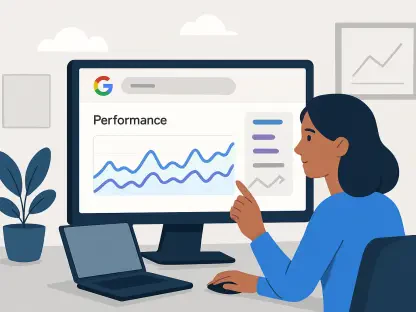Listen to the Article
Business Intelligence has gained an even more important role in B2B digital commerce since last year’s Commercetools report. With digital channels improving, organizations are increasingly using data-driven insights to improve their strategies. In fact, 83% of B2B leaders confirmed that their companies planned to increase investments in technology in 2024. A significant portion is dedicated to BI tools that enhance customer experience, streamline operations, and deliver measurable results.
The Growing Importance of Business Intelligence
This shift was evidence of how the B2B has caught on to the fact that just getting on board with new tech isn’t enough. Salespeople need to know how to turn big piles of data into insightful results. That has all become easier thanks to BI platforms, real-time performance tracking, analysis of buyer behaviors, and refinement of online marketing strategies. All are also used by leading firms to create personalized buying experiences—boosting efficiency and growing revenue.
Digital Maturity Across B2B Enterprises
There’s a huge difference between B2B entities when it comes to digital maturity. Some cling to advanced BI analytics, while others remain traditional, with around 29% not using e-commerce at all. However, more and more enterprises are adopting BI-powered solutions to build tailored and proficient purchasing journeys. Experts think BI is going to be at the heart of accelerating this transformation as we look beyond 2025.
The Need for Quick Returns on Investment (ROI)
With corporations increasing their investment in technology, teams are under constant pressure to show immediate returns on them. That’s where business intelligence excels because it enables you to measure return on investments and sales cycle optimization based on real-time data. Ensuring that a company has the necessary tools for this setup is only one part of this challenge. They also need to make sure that these technologies fit into the bigger picture of their values and goals so that they can produce the right measures.
The Game Changer for B2B in a Multi-Channel World
With the help of advanced analytics, predictive modeling, and AI-powered insights, B2B organizations will be able to provide personalized, omnichannel experiences to buyers who have exceedingly rising expectations. This data-driven approach will empower enterprises to differentiate themselves in a competitive market.
All these features help improve forecasting accuracy, optimize inventory management, and streamline customer interactions across multiple channels. B2B shoppers now use an average of 10.2 channels in their decision-making journey—twice as many as in 2016.
BI tools for analyzing multi-channel data enable firms to create elevated omnichannel experiences, enhancing client satisfaction. Plus, they come in handy in addressing some of the thorniest B2B problems—long sales cycles and buyer inertia. You can track patterns of shopper behavior to shorten the time it takes them to make a decision, increase your competitive position, and increase the likelihood of scoring more deals.
Read on to see how BI will serve as the key platform for success for B2B digital commerce organizations in the world, just like a lot of B2B leaders are already aware that there is innovation through getting the best out of their data.
Innovating with Data for a Competitive Edge
BI has become a core factor in any successful B2B strategy—from improving how clients see your brand to increasing sales forecasting. Those who invest in and effectively use BI will be able to create new opportunities, monetize data, optimize operations, and improve customer happiness, which translates to a high level of loyalty and long-term growth.
To satisfy B2B buyers, you must level up the omnichannel offering and personalized interactions. This especially holds weight for manufacturers, distributors, and wholesalers, who must heavily rely on technology to capture and leverage real-time data to make the right decisions instantly. Here is how you can apply business Intelligence software, a necessary tool for gaining insight into purchasing behavior in order to take appropriate action across various digital touch points.
Driving Customer-Centricity in 2025
In the words of Matt Swan, Cloud Data Architect at Henry Schein, “With end-to-end ownership, we were able to design exactly the customer experience we wanted.” A shift from value to relationship is vital for businesses to remain competitive and provide shoppers with a more informed, seamless buying journey.
Even for the biggest players with the most impressive budgets, these solutions must also trickle down the hierarchy to empower internal teams. After all, sellers, marketers, developers, and operations are the ones who harness the exemplary data and transform it into enhanced decision-making. A comprehensive approach to digital transformation, inclusive of BI, no-code/low-code tools, and composable technology stacks, also helps companies overcome adoption challenges. In fact, 46% of manufacturers have reported a lack of cross-departmental collaboration as a key barrier to adopting smart products.
Meeting the Demands of the Modern B2B Buyer
Today, millennials and Gen Z are leading the way in B2B purchases over $1 million. These generations are comfortable with technology and want transparency, efficiency, and easy access to data. Moreover, 94% of B2B buyers now rely on ratings and reviews before making a purchase, reflecting the growing influence of social proof in decision-making. This trend reflects the transition to using customer feedback to prepare product offerings and digital marketing tactics.
A key driver behind BI adoption in B2B commerce is combating inertia. Organizations have little time to react to the demands of 54% of consumers who would switch suppliers based on poor experiences. So, how do you meet people’s demands where they are? Take a look at the case study below to learn just how this roofing company did it.
Outperformer Spotlight: Beacon Building
Beacon Building, North America’s largest publicly traded distributor of roofing materials and building products, is an example of how omnichannel strategies and BI tools intersect. For Beacon, being “omnipresent” means meeting client needs in real-time, wherever they appear.
When contractors forget items or run low on materials at a job site, Beacon must provide solutions quickly. BI products help them track real-time requests, inventory levels, and logistics, ensuring that contractors get the right materials when needed. This ability to respond quickly to demand is powered by data insights that guide decision-making and help Beacon ensure customers are never left waiting—thus reinforcing their omnichannel promise and maintaining client trust.
Bridging Sales, Marketing, and Support for Better B2B Outcomes
In 2025, delivering superior B2B interactions means understanding the interconnected roles of all the teams within your company. But also, examine how BI tools can bridge these functions:
Sales and Support: Armed with customer insights, salespeople can engage buyers with personalized offers, while support teams can resolve issues based on real-time feedback.
Marketing Teams: With BI analytics, marketing can tailor campaigns using insights from past behavior to predict future purchasing patterns.
Buyers: B2B buyers demand seamless and intuitive shopping experiences. When they have easy access to relevant information, they can make informed choices.
Technology and Operations Teams: These departments ensure that the appropriate systems are in place to capture, analyze, and act on data quickly. A composable tech stack that integrates BI solutions is essential for adapting to all these high-tech requirements.
Having real-time feedback and a person’s procurement history will help teams quickly solve their problems, leading to higher consumer satisfaction and loyalty. By having people from cross-functional teams work together, they make better decisions, eliminate inefficiencies, and ensure that every person is working on the same business strategy. That way, B2B companies can build a more cohesive and responsive offering by empowering all units with shared data.
The Road Ahead
The verdict is here: Using BI can enhance customer experiences, improve operational efficiency, and help you navigate the B2B landscape with ease. A data-driven culture will drive internal teams to work more efficiently, deliver personalized offerings, and move faster while making informed actions. By using smart tools in every part of the organization and connecting processes more quickly, B2B commerce can understand what clients want—ultimately increasing their profits in the long run.









